
|   |

|   |
National Conference on Indian Classical Dance 2024 in Pune - Kiran Java e-mail: kiran@kiranjava.com Photo credit: DPU Archives May 24, 2024 A national conference on Indian classical dance was organized by Dr. D. Y. Patil School of Liberal Arts and curated for the 2nd year in a row by Dr. Nandkishore Kapote, Director and Ph.D. in Kathak dance. Student scholars and performers of Indian classical dance from across India gathered under one banner at the DPU's world class medical college auditorium on 27th April 2024 to discuss their research in the performing arts. 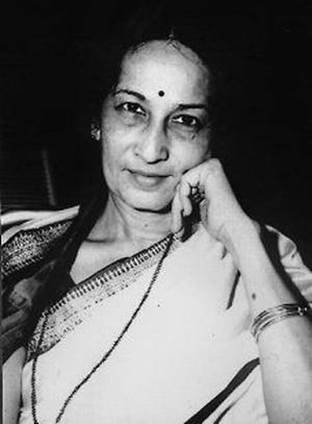 Dr. Rohini Bhate (File photo from Wiki) The conference opened with Late Dr. Rohini Bhate's composition of Ganesh Vandana that she had choreographed with a group of Kathak and Bharatanatyam performers for the inaugural day of the 1997 Pune Festival. In a stunning coincidence, two of the artistes from that early group who performed at the Pune festival i.e. Dr. Nandkishore Kapote (Kathak) and Dr. Swati Daithankar (Bharatanatyam) came together to perform this composition after a gap of 27 years. Although the choreography was initially designed for a group, it was beautifully performed as a duet with some brilliant synchronized movements of both the classical art forms. It was appreciated by the audience and thus was a fitting tribute to the maestro who enriched Pune with her rich contributions in Indian classical dance. 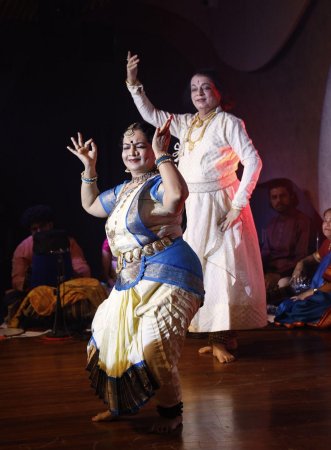 Dr. Kapote and Dr. Daithankar perform the Ganesh Vandana The performance was followed by a solo Bharatanatyam program by Dr. Daithankar that included the story of Ram and a solo Kathak program by Dr. Kapote accompanied by tabla maestro Pt. Kalinath Mishra of the Banaras gharana. Dr. Kapote gracefully performed on Thumak Chalat and several compositions taught to him by Pt. Birju Maharaj. The first session concluded with a clip of a performance by Dr. Bhagyashree Patil, Pro-Chancellor of Dr. D. Y. Patil Vidyapeeth, Pune, who embarked on her Bharatanatyam journey at the age of 55, thereby becoming an inspiration to women, proving that it is never too late to pursue one's dreams. This also prompted Dr. Bhagyashree to start the performing arts department at the University to provide more opportunities of holistic education and preservation of our Indian culture and heritage. 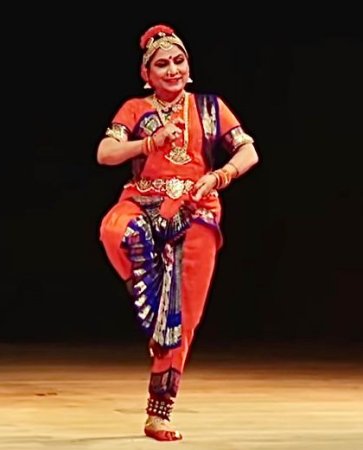 Dr. Bhagyashree Patil Several teachers who have been propagating Indian classical dance in the twin town of Pimpri-Chichwad were felicitated at the conference. These performing artists have been grooming students in Kathak, Bharatanatyam, Odissi and Kathakali for over 30 years with some like Geetha Sharma who just completed 50 years of teaching this year. Over thirty research scholars presented various topics at the conference across the Indian classical styles of Kathak, Bharatanatyam, Odissi, Sattriya, Mohiniattam and Kuchipudi. Topics included 'Analytical study of the unpublished writing of Late Pt. Lacchu Maharaj and its relevance to Kathak dance', 'Kuchipudi dance and Spirituality', 'Interrelationship between dance, sculpture and painting with a focus on Odissi dance', 'Kinetics of Mohiniattam along with demonstration of Mohiniattam', 'Study of Jaipur Gharana's Kavitt compositions by Pt. Narayan Prasad' and 'Aesthetics in Indian Classical Dance along with a lecture-demonstration using the language of Bharatanatyam'. A topic related to mudras was 'Relationship of the mudras used in chanting Gayatri Mantra with mudras of classical dance'. 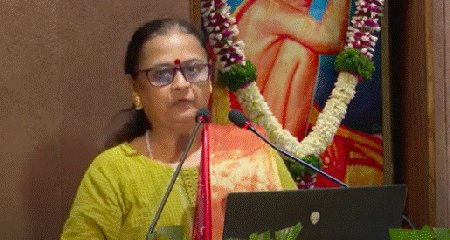 Scholar Paullumi B. Mukheerjee presents the writings of Pt. Lachchu Maharaj Many presentations dealt with performing arts related to human health such as 'Indian Classical dance and mental health', 'Impact of dance on health', 'Importance of dance as a coping mechanism for individuals with Cerebral Palsy', 'Indian classical dance and human psychology' and 'Daily actions from an Ayurvedic perspective for dancers'. 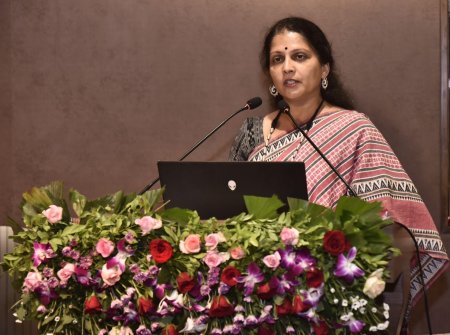 Rasika Gumaste presents a paper on Odissi Diverse classical dance performances graced the conference stage. Scholar Dr. Laxminarayan Jena presented a beautiful Dhrupad in the style of Dr. Maya Rao, Gayatri Ambekar presented Kuchipudi and Dr. Devika Thakur and her group presented Sattriya dance from Assam. 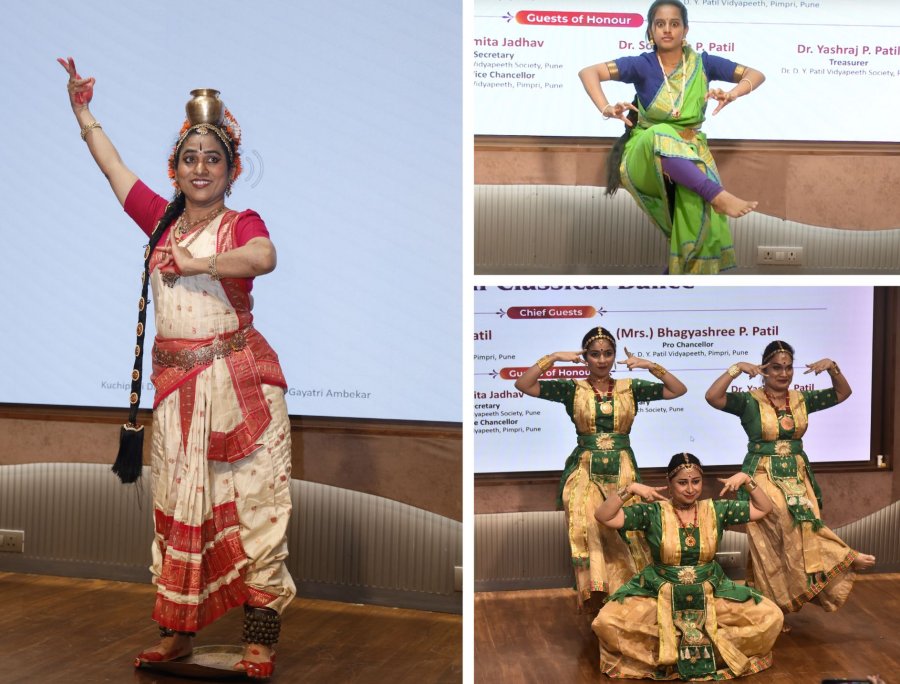 Performances and Lec-Dems L to R: Kuchipudi, Bharatanatyam, Sattriya 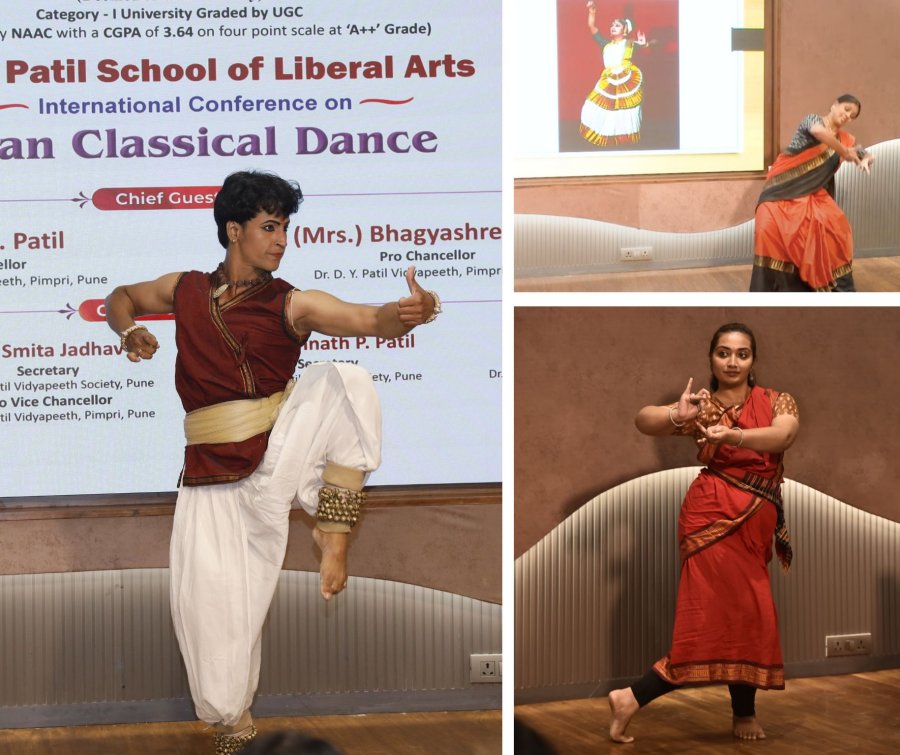 Diverse performances and Lecture demonstrations - L to R: Kathak, Mohiniattam, Odissi An interesting presentation was by Amrita Nerulkar, Kathak artiste and student of Kathak Guru Dr. Rajkumar Ketkar. Nerulkar is a neurophysician whose presentation dealt with the therapeutic potential of the performing arts and how the brain responds to art. "Why are we motivated to move?" she asked. According to Nerulkar, as babies when we are in the womb of the mother we hear the heartbeat of the mother along with vibration of the mother's movement at the same tempo. This sets a rhythmic movement and the pace of auditory input coupled with movement within our being. As babies we bring into the world this experience. So whenever we hear rhythmic movement we automatically move; if we didn't move then we would experience sensory chaos or conflict. The university plans to publish the research findings and paper presentations in its journal which will be accessible to scholars and the general public. 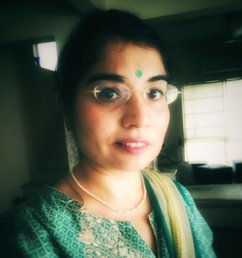 Kiran Java is a writer and author of 'My First Book of Kathak Dance' and 'Meeting the Kathak Rishi'. She holds a Masters degree in Journalism and Communication and a Bachelor's degree in Marketing from Eastern Connecticut State University, USA. She holds a Diploma in Natyashastra with Kathak relevancy and a certification in Vallabh Vedanta from Mumbai University. For more information visit kiranjava.com |